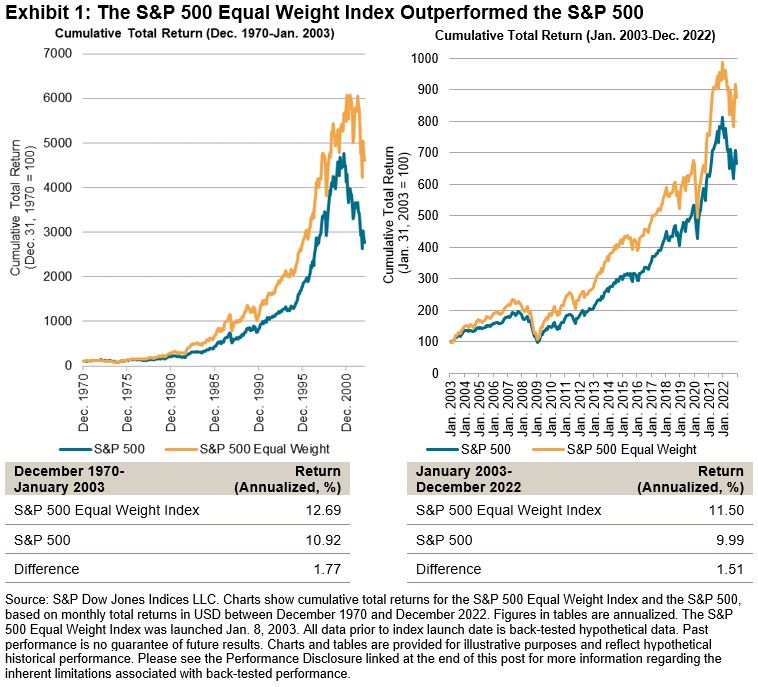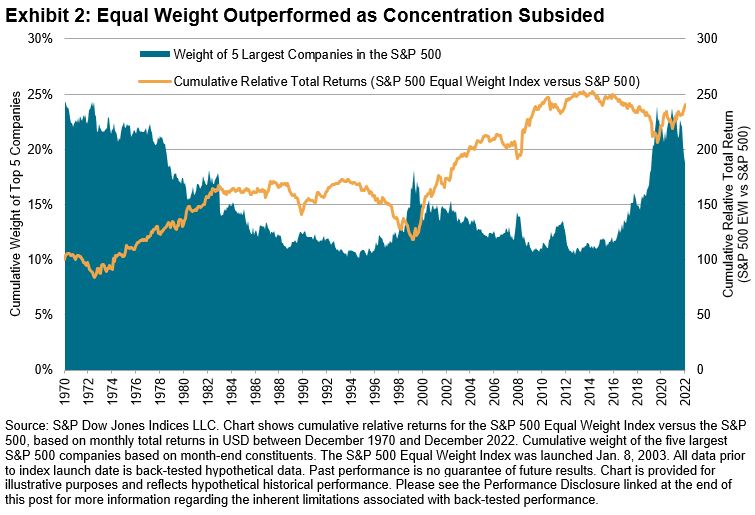Anyone who has perused our S&P 500® Factor Dashboard for December 2022 (and it’s a shame if you have not) will recognize Exhibit 1 below. The horizontal axis represents the difference between the weighted average value and growth scores (at the beginning of 2022) for each of the 17 factor indices in our dashboard, while the vertical axis shows each index’s 2022 performance relative to the S&P 500.
Exhibit 1 shows that the value-growth differential explained nearly 80% of the variation in performance across factor indices last year. The importance of style exposures in explaining factor index returns is unsurprising given the significant spread between Value and Growth returns in 2022. S&P 500 Value outperformed S&P 500 Growth by 24% last year, Value’s biggest winning margin since 2000, and the fourth highest since 1995.
Style scores are not the only potential explanatory variable; sector exposures can also be relevant in analyzing relative returns. Information Technology, the largest sector in the S&P 500, underperformed the benchmark by 28% in 2022, and Exhibit 2 shows the relationship between each factor index’s IT weight and its relative performance. This simple metric has even more predictive power than the spread between an index’s value and growth scores.

But sector and style exposures are not independent. In 2022, IT was the sector most underweighted in S&P 500 Value and most overweighted in S&P 500 Growth. Alternatively, of the S&P 500’s 11 sectors, IT had both the lowest weighted average value score and the highest weighted average growth score. This raises an obvious question: did IT underperform because it was expensive and fast-growing, or did Value outperform (and Growth underperform) because of their IT weightings?
We can address this question by ranking the S&P 500’s constituents by the difference between their value and growth scores, and then dividing the index into quintiles. Consider the quintile with the biggest difference between value and growth scores, a combination of cheapness and relatively slow growth. IT composed 7.4% of the weight of this quintile, and those issues represented 5.0% of the weight of the IT sector. Between 7.4% and 5.0%, there’s not much to choose.
At the opposite end of the scale—the “expensive, fast growth” or “EFG” quintile—there is a much bigger distinction. Exhibit 3 shows that IT companies represented 81% of the EFG quintile’s weight. The same “expensive, fast growth” companies made up 64% of the IT sector. In other words, the IT sector had much more exposure to non-EFG names than the EFG quintile had to companies from sectors other than IT.

On this basis, it’s fair to say that IT was more important to the expensive, fast growth quintile than members of that quintile were to the IT sector. This is a particular result rather than a general observation. At other times and with other sectors and factors, the conclusion might well be different. But in 2022, it appears that the IT sector was more important to the interplay of value and growth than that interplay was to IT.
The posts on this blog are opinions, not advice. Please read our Disclaimers.

























































